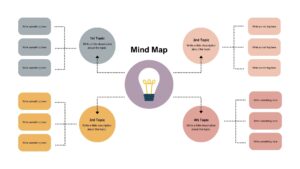The Edelman Trust Barometer 2024 revealed that while global trust in education has declined by 12%, skepticism toward digital education products has surged by 21% in just one year.

In a post-pandemic world driven by rapid digital consumption, trust in institutions has become increasingly fragile.
Nowhere is this more evident than in the education sector, where misinformation, diploma mills, inflated rankings, and AI-generated content have created a fog of doubt for students and parents alike.
For universities and EdTech companies, establishing credibility is no longer just a branding exercise—it is a core pillar of long-term sustainability.
The Edelman Trust Barometer 2024 revealed that while global trust in education has declined by 12%, skepticism toward digital education products has surged by 21% in just one year.
This trend underscores a deeper issue: the erosion of truth in an age where content travels faster than credibility. In this context, educational marketing must evolve from transactional tactics to foundational strategies that prioritize authenticity, transparency, and proof over polish.
The Data-Transparency Paradox
Transparency has long been heralded as a cornerstone of trust. However, in the realm of higher education marketing, there is an emerging paradox: too much unfiltered data can obscure rather than clarify.

Colleges often flood prospective students with dashboards filled with employment statistics, diversity metrics, faculty credentials, and research funding. While these are important, their unchecked volume and lack of context can foster confusion, not confidence.
Take, for instance, the case of an EdTech startup in India that published a report showing a 94% job placement rate post-certification.
Investigative analysis by Medianama in March 2024 found that this figure excluded those who dropped out or accepted internships, leading to a significant trust backlash.
The intent to showcase success was overshadowed by the absence of context, reinforcing public skepticism.
Incorporating curated transparency should now be a priority in any education marketing strategy. This means providing data that is not just accurate but also contextualized and humanized.
Instead of a standalone number, institutions should narrate what those numbers mean in real terms. How does a 75% employment rate translate across geographies, industries, or marginalized communities?
Rethinking Influencer Collaborations in EdTech
In recent years, EdTech companies and universities have leaned heavily into influencer marketing. From Instagram educators to YouTube course reviewers, this model has proven successful in generating clicks.

But in the current climate of misinformation and authenticity fatigue, trust is no longer guaranteed through association with high-profile personalities.
In April 2024, a leading EdTech platform in Southeast Asia faced criticism when its influencer-led course promotions were found to include misrepresented curriculum endorsements.
Despite having millions of views, the trustworthiness of the platform took a hit, forcing a complete overhaul of its ambassador strategy. This highlights a critical shift: audiences now demand substance, not spectacle.
Institutions need to move toward what can be termed “peer-proven influence.”
This involves engaging alumni as micro-influencers, spotlighting student-generated success stories, and using faculty thought leadership authentically. These voices carry deeper resonance, especially when framed within real, lived experiences.
Effective education marketing strategies now hinge on credibility rooted in community. Testimonials from students who navigated financial aid, faced systemic barriers, or switched careers after online courses provide more than just marketing fluff—they offer social proof.
Battling Bot-Created Credentials and Fake Reviews
As AI-generated content becomes more sophisticated, so do the tactics used to deceive. From fake reviews on learning platforms to entire LinkedIn profiles of non-existent instructors, the line between real and fabricated has become dangerously thin.

In the education and marketing space, this algorithmic anxiety is reshaping how trust is built, verified, and maintained.
According to a February 2024 report by the World Economic Forum, over 28% of students surveyed globally said they encountered AI-generated credentials during their course search.
With platforms like ChatGPT and Gemini capable of fabricating glowing testimonials, EdTech brands and higher ed institutions must actively invest in verification infrastructure.
Blockchain credentials are emerging as a powerful countermeasure. The University of Melbourne, for example, has implemented digital badges verified via blockchain since early 2024, allowing students to present tamper-proof evidence of course completion and faculty verification.
This model can serve as a blueprint for other institutions seeking to regain control over credential integrity.
Simultaneously, institutions must audit their digital presence for inconsistencies. Reputation monitoring tools powered by AI, such as Brandwatch or Talkwalker, can help identify suspect patterns in testimonials and course reviews, reinforcing authenticity.
Campus Culture Shapes Public Perception Online
While education marketing strategy often focuses on external messaging, internal behavior quietly communicates just as much.

Campus culture—how faculty engage on social media, how inclusively events are conducted, how grievance redressals are handled—sends silent yet powerful signals to prospective students and parents.
In May 2024, a student-led initiative at a mid-tier private university in Delhi went viral on X (formerly Twitter) for openly publishing staff misconduct records and demanding transparency.
The institution’s initial silence fueled distrust, but a subsequent community-driven digital town hall won back public sentiment. This shows that responses matter as much as incidents.
Educational institutions must realize that their brand is not just shaped by what the marketing department posts, but by what everyday stakeholders experience and share.
For example, how faculty comment on LinkedIn articles, how student affairs handle mental health cases, or how alumni speak on Reddit forums—all contribute to the trust equation.
Higher education digital marketing cannot exist in isolation from campus operations. The integration of marketing in education industry success hinges on internal-external alignment.
Authentic culture communicated consistently builds a brand that students believe in not because of a brochure but because of behavior.
A strong education marketing strategy includes building internal playbooks that ensure alignment between institutional values and lived realities.
When what you promise externally matches what students live internally, institutional trust isn’t a campaign; it becomes your identity.
Building “Proof-Driven” Storytelling Ecosystems
In a hyper-skeptical digital world, storytelling alone is no longer enough. Prospective learners seek proof that is not just statistical but experientially valid.

As we look to 2030, the most successful higher education marketing strategies will build ecosystems where every story is accompanied by verifiable evidence.
Case in point: The University of Arizona’s 2024 “Voices of Impact” campaign merged short-form videos of students discussing real-world projects with open access to the projects themselves.
A student discussing solar-powered water purifiers in rural Mexico also shared a link to a public GitHub repository and a UN case report citation. The result was not just storytelling—it was storytelling embedded with credentials.
This model is a departure from traditional marketing in education industry practices. It reflects a shift toward building modular content systems that combine video, social, blogs, student portfolios, and third-party validation in a seamless loop.
Tools like Storyblok and Contentful are increasingly being adopted in higher education digital marketing to create content blocks that can adapt to channel, audience, and proof-points.
As education and marketing increasingly intersect in complex digital ecosystems, proof must be frictionless. Institutions should map every narrative with a companion resource: a whitepaper, student data, third-party mention, or employer quote.
To Conclude
Trust in the education sector is at an inflection point. Misinformation, digital overload, and AI-driven content creation have muddied the waters of credibility.
For higher ed institutions and EdTech brands, the response cannot be reactive. It must be strategic, systemic, and sustained.
The journey toward building institutional trust begins with acknowledging that traditional marketing in education industry playbooks are no longer sufficient.
Higher education marketing must embrace new paradigms: curated transparency, peer-driven influence, digital authenticity, behavioral alignment, and proof-driven storytelling.
These strategies do not just respond to the crisis of credibility—they reimagine marketing for education as a force for clarity, empowerment, and transformation.
In an age where content is abundant but trust is scarce, institutions must become architects of verifiable truth. The brands that will stand resilient in 2030 are not those with the loudest voice, but those with the clearest proof.
So the question is not whether students are watching. The question is: will they believe you when they do?



Pingback: The Ultimate Guide to Inbound Marketing for Higher Education
Pingback: Education Marketing Can Overcome AI Content Paradox in SEO